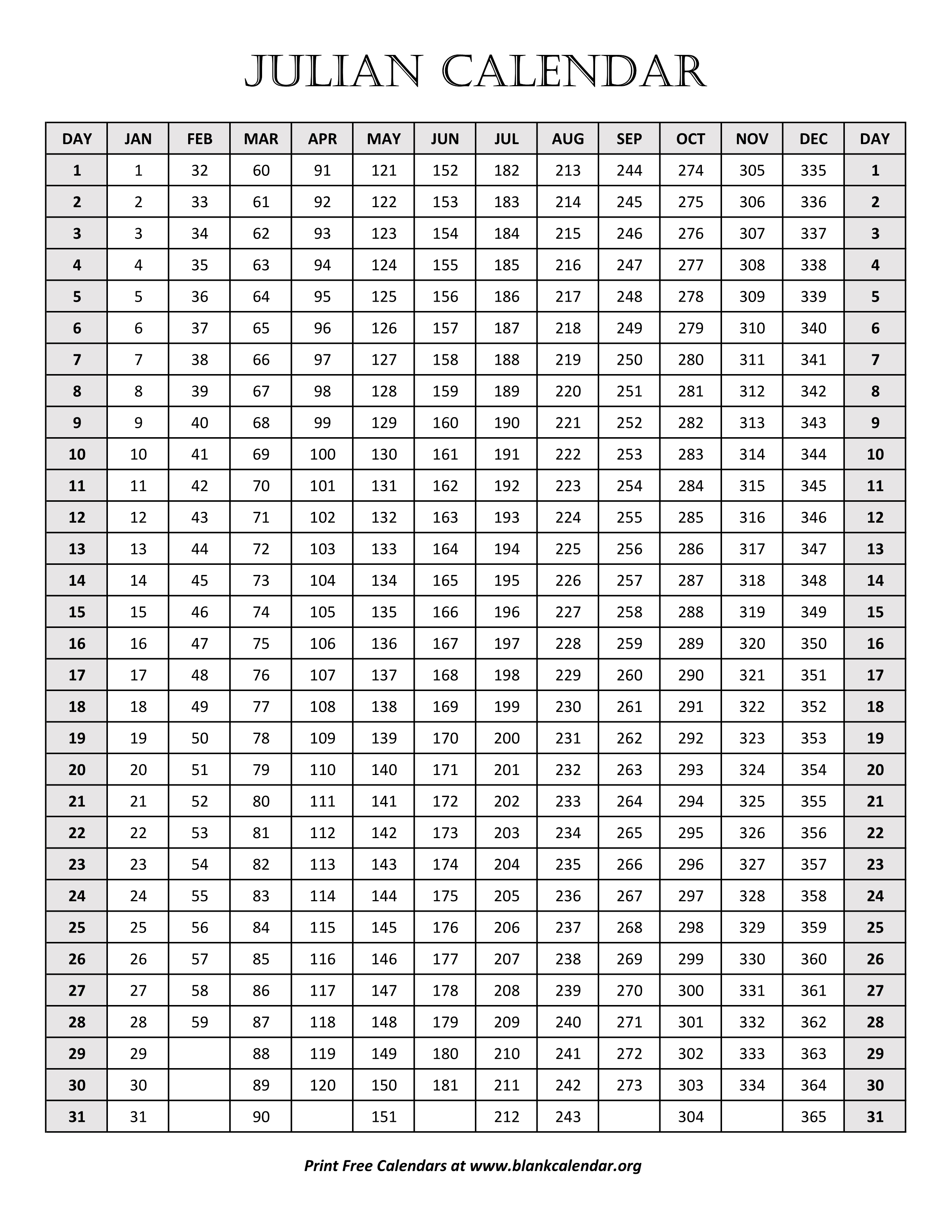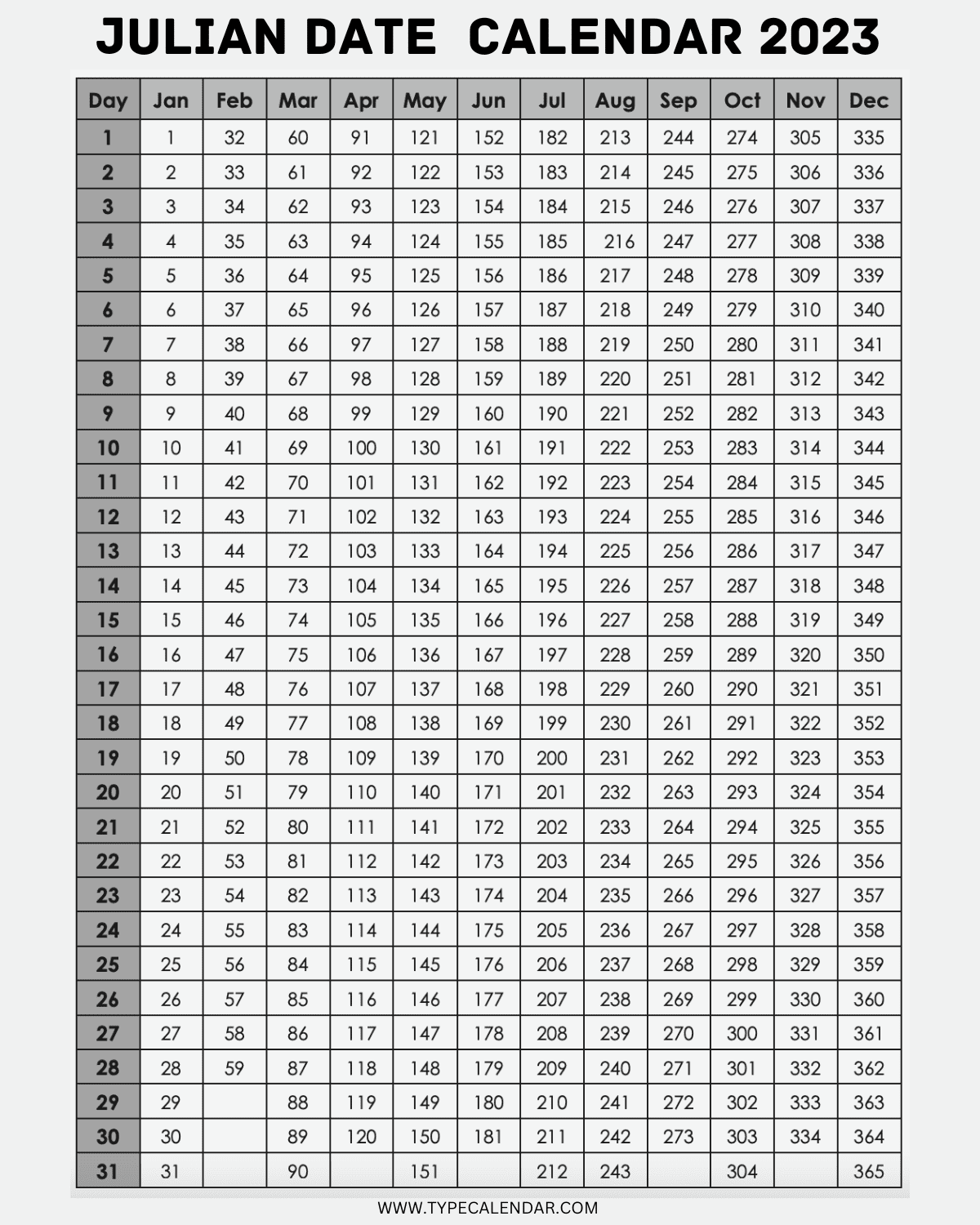Changing Julian Dates to Calendar Dates in SQL: A Complete Information
Associated Articles: Changing Julian Dates to Calendar Dates in SQL: A Complete Information
Introduction
With enthusiasm, let’s navigate by the intriguing matter associated to Changing Julian Dates to Calendar Dates in SQL: A Complete Information. Let’s weave fascinating info and provide recent views to the readers.
Desk of Content material
Changing Julian Dates to Calendar Dates in SQL: A Complete Information

The Julian date system, a steady rely of days since a selected epoch (usually January 1, 4713 BC within the proleptic Julian calendar), is regularly encountered in varied databases and datasets. Whereas providing a easy, sequential illustration of dates, its lack of quick readability necessitates conversion to a extra user-friendly calendar date format (e.g., YYYY-MM-DD). This text delves into the intricacies of changing Julian dates to calendar dates inside SQL, overlaying varied approaches, issues for various database methods, and potential pitfalls.
Understanding the Julian Date System
The Julian date, usually represented as a single integer, does not inherently include details about the 12 months, month, or day. Its simplicity stems from its steady nature; every day is uniquely recognized by its ordinal quantity. Nonetheless, this simplicity comes at the price of interpretability. To acquire a calendar date, one should carry out calculations to find out the corresponding 12 months, month, and day.
The particular epoch used can range, resulting in totally different Julian date methods. The commonest epoch is the one talked about earlier (January 1, 4713 BC), however different methods may use totally different beginning factors. It is essential to grasp the epoch utilized in your dataset to make sure correct conversion.
Approaches to Conversion in SQL
There is not any single, common SQL perform for changing Julian dates to calendar dates. The method varies relying on the particular database system (e.g., MySQL, PostgreSQL, SQL Server, Oracle) and the definition of the Julian date getting used. Nonetheless, the core logic stays constant: figuring out the 12 months, then the month, and eventually the day.
A number of strategies may be employed:
1. Utilizing Constructed-in Capabilities (The place Accessible):
Some database methods present built-in features or date/time libraries that simplify the conversion course of. For instance, some methods may provide a perform instantly changing a Julian date to a calendar date. Nonetheless, the provision and specifics of such features range considerably between database methods.
-
Instance (Hypothetical): Let’s assume a fictional
JULIAN_TO_DATEperform exists:
SELECT JULIAN_TO_DATE(julian_date_column) AS calendar_date
FROM your_table;This instance highlights the perfect situation the place a devoted perform handles the conversion. Sadly, this isn’t the norm throughout all SQL databases.
2. Algorithmic Conversion:
Within the absence of built-in features, we should implement the conversion algorithm instantly inside SQL. This usually includes a sequence of calculations to find out the 12 months, month, and day. The algorithm’s complexity will depend on the particular Julian date system getting used and the specified stage of accuracy (dealing with leap years is essential).
A simplified algorithm (assuming a standard epoch and ignoring subtleties like leap years for brevity) may contain:
-
Estimating the 12 months: Divide the Julian date by 365 (or 365.25 for a extra correct approximation accounting for leap years) to acquire an approximate 12 months.
-
Refining the 12 months: Alter the 12 months primarily based on intercalary year guidelines to account for the accrued discrepancy as a consequence of leap years.
-
Calculating the Day of the 12 months: Subtract the variety of days from the start of the epoch to the start of the estimated 12 months from the Julian date.
-
Figuring out the Month and Day: Use a lookup desk or conditional statements to find out the month and day primarily based on the day of the 12 months.
Instance (Illustrative – PostgreSQL):
This instance demonstrates a simplified method in PostgreSQL. A extra sturdy implementation would require extra subtle intercalary year dealing with and error checking.
CREATE OR REPLACE FUNCTION julian_to_date(julian_date INTEGER)
RETURNS DATE AS $$
DECLARE
12 months INTEGER;
day_of_year INTEGER;
month INTEGER;
day INTEGER;
BEGIN
-- Simplified 12 months estimation (ignoring leap years for brevity)
12 months := (julian_date - 1721424) / 365 + 1; -- Alter epoch as wanted
day_of_year := julian_date - (12 months - 1) * 365 - flooring((12 months - 1) / 4) + flooring((12 months - 1) / 100) - flooring((12 months - 1) / 400) - 1721424;
-- Simplified month and day willpower (ignoring leap years for brevity)
IF day_of_year <= 31 THEN
month := 1;
day := day_of_year;
ELSIF day_of_year <= 59 THEN
month := 2;
day := day_of_year - 31;
-- ... (proceed for different months) ...
END IF;
RETURN make_date(12 months, month, day);
END;
$$ LANGUAGE plpgsql;
SELECT julian_to_date(2458849); -- Instance Julian date3. Utilizing Exterior Libraries or Capabilities:
Some database methods enable integration with exterior libraries or user-defined features written in different programming languages (e.g., Python, Java). This method may be advantageous for complicated conversion algorithms or when coping with specialised Julian date methods. Nonetheless, it introduces complexities associated to database integration and potential efficiency overhead.
Database-Particular Concerns:
The optimum method to Julian date conversion varies considerably relying on the database system.
-
MySQL: MySQL lacks built-in Julian date conversion features. Algorithmic conversion utilizing saved procedures or user-defined features is often essential.
-
PostgreSQL: Just like MySQL, PostgreSQL does not have a devoted perform. Person-defined features utilizing PL/pgSQL or exterior libraries are frequent options.
-
SQL Server: SQL Server additionally lacks a direct conversion perform. Customized features or T-SQL code are required.
-
Oracle: Oracle may provide some date/time features that may be tailored for Julian date conversion, however a customized resolution is usually essential.
Dealing with Leap Years and Different Complexities:
Correct Julian date conversion requires meticulous dealing with of leap years. The foundations for leap years usually are not uniform throughout all calendar methods (Gregorian, Julian), including complexity. Moreover, the epoch used considerably impacts the calculation. A sturdy resolution must account for these elements. Ignoring these complexities can result in important inaccuracies, particularly for dates removed from the epoch.
Error Dealing with and Information Validation:
A production-ready Julian date conversion perform ought to incorporate sturdy error dealing with. This consists of checking for invalid Julian date inputs (e.g., detrimental values or values exceeding an affordable vary) and dealing with potential exceptions gracefully.
Conclusion:
Changing Julian dates to calendar dates in SQL requires a cautious understanding of the Julian date system, the chosen database’s capabilities, and the nuances of calendar methods. Whereas a easy, common resolution does not exist, algorithmic approaches utilizing customized features or saved procedures present flexibility and accuracy. Nonetheless, meticulous consideration to element, notably concerning leap years and error dealing with, is essential for dependable and sturdy conversion. The selection of methodology will depend on elements like database system, efficiency necessities, and the complexity of the Julian date system in use. At all times totally take a look at your conversion perform with varied inputs, together with edge circumstances, to make sure accuracy and reliability.







![]()
Closure
Thus, we hope this text has supplied precious insights into Changing Julian Dates to Calendar Dates in SQL: A Complete Information. We thanks for taking the time to learn this text. See you in our subsequent article!